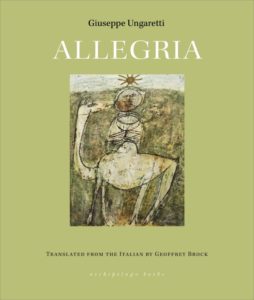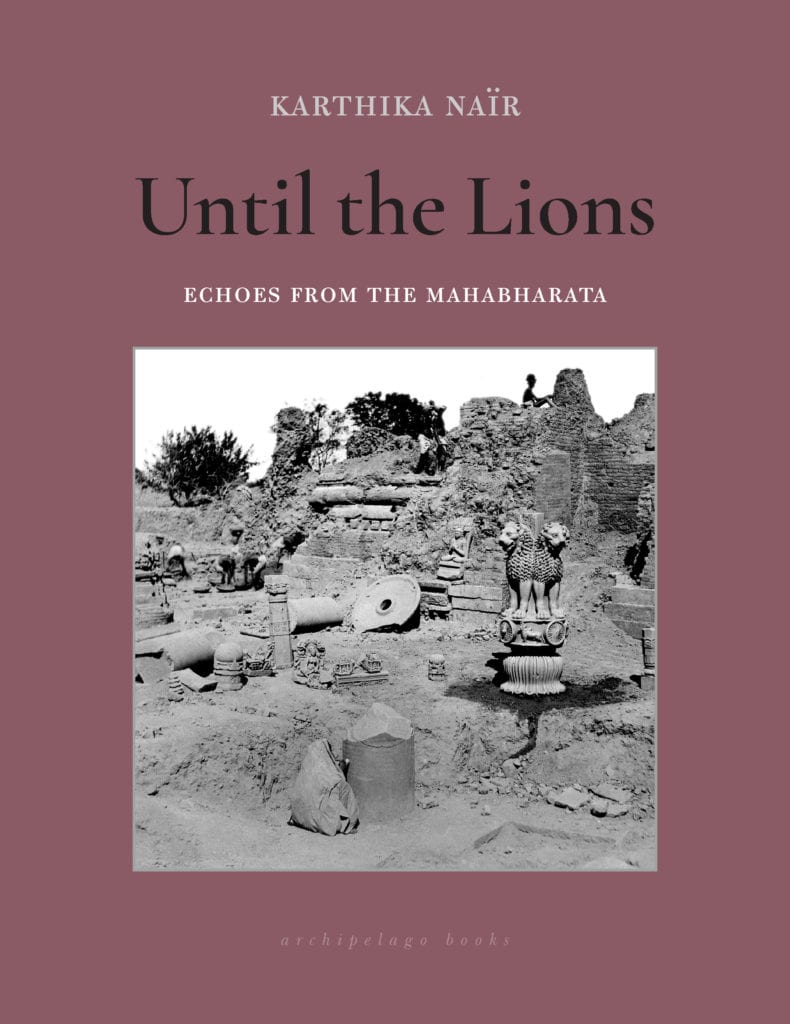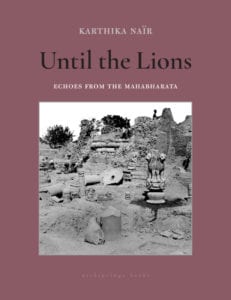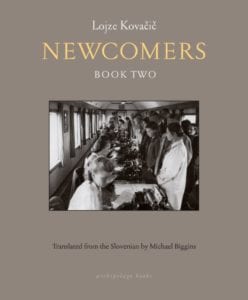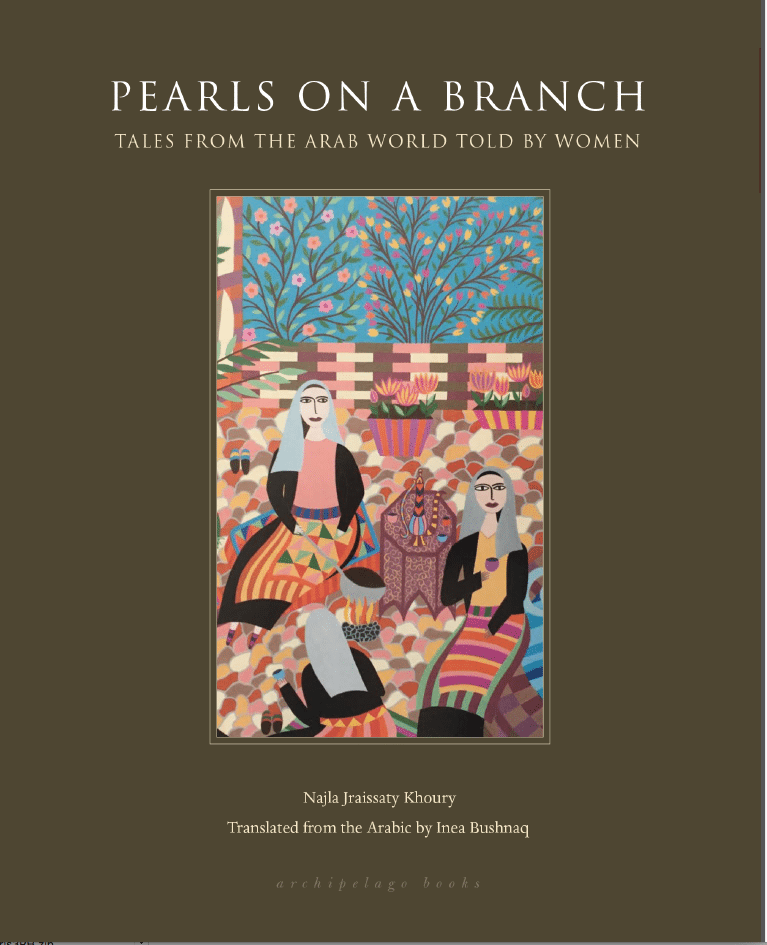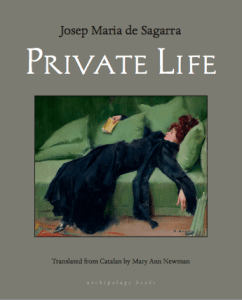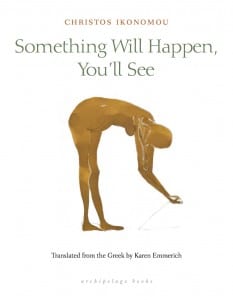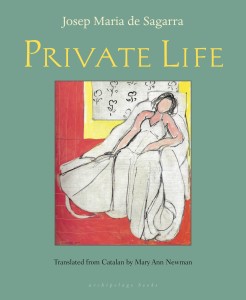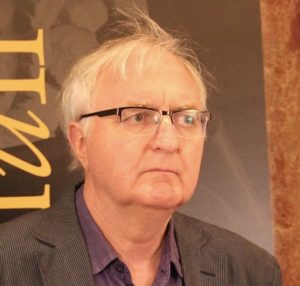 The original article was written by Azareen Van der Vliet Oloomi in the Los Angeles Review of Books.
The original article was written by Azareen Van der Vliet Oloomi in the Los Angeles Review of Books.
IN 2010, I moved to Girona in Catalonia. I lived in a run-down apartment, near a gelid river, and spent most of my time pacing the streets, trying to keep warm. I spent the rest of my time obsessing over the literature of Catalan writer Josep Pla, which I had discovered a few years earlier. His work hadn’t been translated into English yet, and I felt as though I had found a secret literary well at the foot of the Pyrenees. The magic of literature often makes us believe that we are a singular witness to the secrets of the page, but luckily, we are never alone in our obsessions. In fact, Peter Bush was already in the process of translating Pla’s masterpiece, The Gray Notebook.
Josep Pla was born in Palafrugell in 1897. As a young adult he left for Barcelona to study law, but was forced to return to his sleepy seaside village of Palafrugell during the 1918 Pandemic. He spent the year recording deaths, reading, writing. He taught himself how to translate the landscape into words. He became consumed with writing. Decades later, he published an expanded version of his diary under the title The Gray Notebook.
What most fascinates me about Pla is his ability to fictionalize memory, to recycle his own work; over the course of his writing life he built an interconnected universe of books that have an encyclopedic relationship to one another. A complicated moody man caught between his Catalanist and Catholic identities, Pla spent the last decades of his life living in a 17th-century farmhouse in Palafrugell, known as Mas Pla. He died there in 1981 and is buried at the cemetery in Llofriu.
The Gray Notebook was published by the New York Review Books in 2014. I read it again in English while living in Chicago (also gelid, though at least my house is warm). There is a growing collection of Josep Pla’s works available in English, all exquisitely translated by Bush. Bush is not only a prolific translator, but also a political activist and an innovative pedagogue. He set up the MA program in the Theory and Practice of Translation at Middlesex University, where many stellar translators (like Anne McLean and Lisa Dillman) got their start. Peter Bush and I discussed his childhood and his long career: his translations of Marxist texts, which garnered the reproach of the Oxford academic establishment; his award-winning translations of Catalan literature; and of course, Pla’s epic masterpiece, The Gray Notebook.
AZAREEN VAN DER VLIET OLOOMI: You began your translating career by working with Marxist texts. How did you come to literary translation? How did this shift change the direction of your life?
PETER BUSH: I was a political activist in Oxford and London for six years from 1967. As I was one of the party members with a knowledge of languages, I translated Marxist texts and was also a journalist on the daily newspaper covering Spain, Latin America, Portugal, and Italy. This wasn’t to the liking of the ex-MI6 Alfonso XIII Professor of Spanish at Oxford University, where I was researching — the one idealized by Javier Marías as Toby Rylands — and I found it difficult to find a post. My references said things like, “Peter Bush spent more time haranguing at demonstrations than reading in libraries,” or in more Oxonian cadences, “He went outside the society of the university.”
Eventually I taught in inner-city London schools for 14 years. I was head of languages at Holland Park in west London and had been teaching Campos de Níjar/Níjar Country, Juan Goytisolo’s account of his visits to impoverished Almería and Murcia. Juan Goytisolo was one of the most prominent Spanish writers at the time and some of my students’ grandparents were migrant workers from those areas or from Larache, in the former Spanish protectorate in Morocco. I thought they’d be interested; they weren’t — they wanted to be part of swinging London. I prepared a critical edition hoping that some socio-economic background might help students come to grips with the narrative. Juan Goytisolo liked it and when the first volume of his autobiography came out — Coto Vedado/Forbidden Territory — I thought it was wonderfully original and was discussing it with a colleague, John Lyons, a translator of Ernesto Cardenal, in our little staffroom and he asked: “Why don’t you translate it?” That’s when my career as a literary translator kicked off.
When did you first travel to Catalonia and become aware of it as a region with a cultural identity that is distinct from the rest of Spain?
I first traveled to Catalonia mentally when I was reading French and Spanish as an undergraduate in Cambridge. In the second year of the course, I opted for the Spanish medieval literature and culture course and that’s when I discovered the importance of Catalonia in the Middles Ages and read the whole of Vicens i Vives’s economic history of Spain. I could also have opted to learn Catalan but I didn’t; I chose to read all of Cervantes instead. However, my closest friend at the time did choose Catalan and with him I read the great poets Carles Riba and Jacint Verdaguer. Ironically, my friend fell in love with a madrileña, and spent his whole life in Madrid.
Cambridge also had strong Catalan connections — exile Batista i Roca lived in the city and Catalan lecturer Geoffrey Walker was a leading member of the Anglo-Catalan Society. There was somewhat of a division in the faculty: those who were into the 1898 Generation and Ortega y Gasset, and those who thought they were all second-rate — with the exception of Machado — and were more drawn to history. David Barrass was one of the latter and he offered a course on contemporary Spanish history that had a strong Catalan focus. (No Latin American literature was taught in Cambridge until 1968.)
I first traveled to Barcelona in 1968 in pursuit of my academic research into the relationship between writers and working-class organizations at the time of the 1868 Revolution. Many of my sources were newspapers, chapbooks, and pamphlets written in Catalan, so that was when I first began to read Catalan. In 1970, I returned to Barcelona to pursue my non-academic activities. Oxford historian Raymond Carr had gathered around him a group of postgraduate researchers from Spain, and some of them took an interest in my political activities — Pepe Varela, Juan Pablo Fusi, and Santi Udina. Santi was an economic historian and had published in the New Left Review under a pseudonym, given that Franco’s dictatorship still had Spain under its heel. Santi was active in a left-wing group in Barcelona, and I went over for 10 days to give lectures and talk to a range of intellectuals and trade-unionists mainly in an abandoned flat on Carrer de Balmes. I stayed with Santi in Sant Cugat and that’s when I first heard Catalan being spoken en famille. I also visited activists in Baix Llobregat, workers in the Seat factory who spoke in southern Spanish, and textile workers in Terrassa who spoke Catalan. I had previously spent three summers teaching English in Madrid from 1964 to 1966, and my sense of the difference between Madrid and Barcelona was, yes, that there was the Catalan language, with very little public presence, and that Barcelona seemed much more like a city under occupation. It was very gray; Gaudí was covered in soot.
I often think of learning a new language as a kind of love affair. Can you describe your love affair with Catalan? How is your relationship with Catalan different from your relationship to Spanish, French, and Portuguese?
Everything depends on your point of departure. Estrangement, evasion, the search for another place to be are all elements in a love affair, and as consciousness is so located in language and culture, the addition of other languages leads to an expansion of consciousness and culture (in its broadest sense).
I was brought up speaking a non-standard working-class dialect of English — a hybrid of my father’s rural Lincolnshire and my mother’s urban Yorkshire. When I entered elementary school and was told this wasn’t “proper” English, I was shocked. I knew standard English from radio, movies, and newspapers, but it wasn’t what we spoke at home. The situation worsened when I passed the exams to go to the Grammar School, the first time anyone from my family had gone to this place that had existed in the town since the 16th century. At the elementary school, most pupils came from the neighborhood. The Grammar School was the “natural” home for the sons of the middle classes. I felt increasingly estranged from my home language and uncomfortable with the standard that the majority used in their homes in very different parts of town. So Latin and French rescued me. Here we all started from zero, and I excelled, and then came Spanish.
My estrangement was linguistic and cultural. My father was a print worker and active trade-unionist, not a manager, banker, shop-owner. I loved jazz, rock ’n’ roll, country-and-western; school music was only classical. I only really came to like and read English literature for pleasure when I was 16 and reading Virgil and Horace, Balzac and Lorca and company in the original. Those three languages freed up my imagination, feelings, and intellect, got me over what I suppose was a narrowness caused by a visceral sense of class that simultaneously was powering me into other places. In Cambridge, for example, I was more interested in going to Raymond Williams’s lectures on European drama and the English novel and Nikolaus Pevsner’s on the Baroque than most of my Spanish and French literature lectures, though I was thoroughly enraptured and absorbed by Rimbaud and Baudelaire, Proust and Galdós and Gide, Camus and Sartre, who were the authors most in vogue. I started to learn Portuguese when I was a journalist and consolidated that when I translated Chico Buarque and made a TV documentary about him. I began to learn Catalan at the end of the 1970s as I was hoping to live in Barcelona for a year. That didn’t turn out — I went to a small town in Murcia!
Later it was literally a matter of love. When I was director of the British Centre for Literary Translation, I met my wife, Teresa Solana, the director of Spain’s Translators’ House. We both left our posts to go and live in Barcelona in 2003. That’s when I really started to be fluent in Catalan. For the first time, I was learning the language properly in the country where it was spoken. Again, the linguistic shift wasn’t straightforward. I met Teresa speaking Spanish and that’s what we still mostly speak to each other. Teresa speaks Catalan to our daughter, who speaks to me in English, and most of our conversations are trilingual, even after our move to the United Kingdom in 2014.
Many of the Catalan books you’ve translated deal with exile and disenfranchisement, with lives lived at the margins. Do these themes speak to you personally?
I started in Spanish with Juan Goytisolo and Juan Carlos Onetti, both exiles and victims of dictatorship. The exclusion of my working-class culture from my own education led me to embrace other languages and literatures and want to bring those into the English-speaking world through translation, to challenge, as it were, the hegemony of the nationalist standard and canon.
Memories of disenfranchisement came from my family. I was to an extent franchised by the postwar settlement and the welfare state; I studied at Cambridge and Oxford and it didn’t cost me or my parents a penny. My new reality clashed with the visions of life my parents and other members of my family retailed in story after story. I’ll just mention a few details. My grandfather in the village of Pinchbeck was a shepherd living in a tied cottage. He fell ill, and the landowner threw him and his family onto the street. (This was at the end of World War I when three of my uncles were killed in France.) My mother came from Sheffield, lived in the center of the city of steel, and enjoyed an urban working-class culture — socialist cycling clubs, visits to the theater and opera, movies and dancing — until she was put into service with an uncle and aunt, which she left to go strawberry-picking in Lincolnshire in 1929. She met my father and never went back. Then came World War II, and my father was away for two years in France and four in the Middle East; when he returned, he was a stranger to my mother and his young daughters. I was then born into a family that had been ravaged by war. It was a “happy” family on the surface, but turbulence was never far away.
When I was school teacher in London, I taught in schools that were multilingual — 50 or 60 languages spoken by students — and I was fortunate that there was a progressive educational authority, and we attempted to forge a curriculum that responded to the experiences of our students. Students would suddenly appear on the school doorstep as a result of conflicts thousands of miles away — from China, Vietnam, Bangladesh, Cyprus — exiles in flight from civil war and dictatorship. We developed whole school policies on language and culture. All that pedagogical potential was ended by Thatcher, who abolished the educational authority. All these memories and experiences, as well as my academic and linguistic knowledge, nourish my translations, driven by a political anger.
My encounter with Catalan literature also made me angry with myself. I considered myself as a Hispanist, but I had virtually ignored a literature where some of the best fiction of the civil war was written — Uncertain Glory by Joan Sales, In Diamond Square by Mercè Rodoreda, or Josep Pla’s amazing short fiction, as in Life Embitters. Shouldn’t all students of Spanish have to read these authors? Shouldn’t they be as well known to general readers in the English-speaking world as Zafón, Cercas, or Marías?
Do you think the art of translation has anything in common with the art of listening? Do you consider the process of conducting a translation to be an embodied experience?
The art of listening is about capturing nuance, subtext, irony, wordplay, social and political resonances, and being able to listen alertly, whether it be in an exchange with a butcher or to a lecture by Judith Butler, about being interested in and interpreting what another person has to say. On the other hand, listening is usually a one-off; translating involves rereading and then rewriting, researching, and self-editing, interactions with editors and, sometimes, writers. Though, in oral cultures, like my family’s, it involves hearing the same stories many times, over many years, and catching the fresh elements and variations in what is being recounted, and, in my case, nearly all those storytellers are now dead, or have dementia or Alzheimer’s, and that leaves me alone to tell them.
I like the idea of “conducting” because it is as if you are appealing to all the strands in the text as instruments you have to weld into a new whole. The various drafts feel like a succession of rehearsals for the final performances which will be the readings by others. And that is a very intense, embodied experience — as is any act of reading — but more so because you are rewriting and rewriting, and that’s physically exhausting: body and mind are engaged. Literary translation is embodied in another sense. It’s a livelihood. It’s the means to pay the rent and put food on the table.
Has the act of translation changed how you think about yourself? Do you think of literary translations as a form of self-translation? Or is it more like a journey?
It is self-translation in the sense that you are moved deep into the language and experience of another person and culture, into unknown territory that then speaks to parts of yourself; through translation your own experience and imagination are extended, your use of language is broadened.
In my case, translation has taken me on real journeys to Havana, Montevideo, Rio de Janeiro, Barcelona, and Palafrugell. My translations of Cuban literature, for example, sprang from a commission to make a TV documentary about Tomás Gutiérrez Alea. Translating Pla, Sales, and Rodoreda has changed my view of the civil war and Spanish culture. These writers and their work are obviously embedded in Catalan language and history and have suffered as a result in terms of recognition both inside and outside Catalonia because of the civil war and dictatorship. However, I think in the act of translating, you say to yourself and others, these are great books about specific moments in Catalan and Spanish history, but they are also about a young man forging himself as a writer, or a group of radical students in the early 30s whose lives are ruined by the rise of fascism, or an older working-class woman looking back on her struggle to survive with her children in a city under siege.
How do you approach teaching the art of translation? What advice would you offer a novice translator?
I approach it as a form of creative writing where students must read widely and learn to become writers in their own language. Most come from degrees that have prioritized academic discourse, which, generally, isn’t the language of literature! I advise emerging translators to be proactive, to think laterally and network extensively in the world of professional literary translators and publishing. And to start building up a vitae by translating short stories, poems, or excerpts from novels in magazines.
We share a deep love for Josep Pla, whose work wasn’t translated into English until you took on El Quadern Gris. How did you happen to start translating Josep Pla? What is the most enjoyable part of translating Pla, and the most challenging?
You’ll probably be shocked by my response. I came to Pla via Valle-Inclán. I had translated Tyrant Banderas for Edwin Frank at the NYRB. A few months later, Edwin wrote to tell me he’d bought the English rights to El Quadern Gris and asked if I knew someone who could translate it. I’d not read a word by Pla. I consulted with my wife, and she said I’d enjoy translating the book. I responded to Edwin that I could do it. The adventure of translation …
The most enjoyable part [of working on the book] was the humor and the description of literary life in Barcelona; the most challenging was Pla’s description of land and sea. I’d translated a lot of complex literature, but never such descriptions. Here is an example:
The sunlight is like a sheet of glass. Wind and sea battle in a futile, delirious fury. Everything stays the same, impassive and still — the coral of the almond trees, the playful kitten, the aioli, and the anglerfish soup. The things of the world pass by the light in my window — wind, water, and diamond spray racing toward the raw purple of the horizon. The brightness turns daylight into haze and my eyelids droop after that sudden, shimmering, dazzling illumination.
I had to draft and redraft these sections. I had to develop a new strand in my literary writing.
You are currently working on another of Pla’s books, Aigua de mar.
It’s another stylistic challenge because of the descriptions of the nautical world, of boats and fish. It also shows the immense humanity of Pla. He was at home in the bohemian, expat colony in hyper-inflationary Berlin or boarding-houses in London or Paris, but he never turned his back on the fishermen and farmers of the Empordà and Costa Brava.
What is your favorite region in Catalonia? Do you like to spend time in the cities or provinces described in the books you are working on?
I lived for 10 years in Barcelona and frequently return. Beyond Barcelona, I love the small towns on the Costa Brava described by Pla — Begur, Calella de Palafrugell, and Cadaqués.
I’ve always liked to see the places in the books I translate. Learning other languages and reading other literatures makes me want to go to where they come from.
Do you feel optimistic about the future of Catalonia? How has the recent geopolitical crisis affected your work or influenced your process as a translator?
By nature, I’m an optimist, but at the moment it’s hard to be optimistic about Catalonia, the United Kingdom, the United States, or anywhere, what with Vox, Brexit, and Trump and the rise of the extreme right all over the world.
The crisis has affected my work, in the sense that I now promote Catalan literature widely, and some say that I’m “anti-Spanish,” which is ridiculous. I’m still translating from my other languages and have spent years promoting the teaching of the Spanish language and its literatures. I’d say rather that I’m enjoying becoming a specialist in Catalan literature and discovering for myself all these great writers I want to bring to readers in the English-speaking world.

